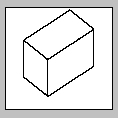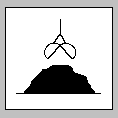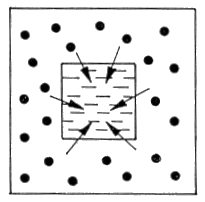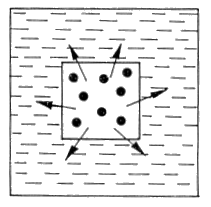| White sugar | [German version] |
Table of contents |
|
| General: | ||
| Product information | ||
| Packaging | ||
| Transport | ||
| Container transport | ||
| Cargo securing | ||
Product information
Product name
| German | Weißzucker |
| English | White sugar |
| French | Sucre blanc cristallisé |
| Spanish | Azúcar granulado |
| Scientific | Sucrose (C12H22O11), Saccharum officinarum, Beta vulgaris var. altissima |
| CN/HS number * | 1701 99 10 |
(* EU Combined Nomenclature/Harmonized System)
Product description
Sugar is the name for the sweet-tasting foodstuff obtained from sugar beet or sugar cane, the products respectively being known as beet sugar or cane sugar. Chemically speaking, both beet and cane sugar are sucrose (C12H22O11). Sugar is suspected to have its origins in India, where the first sugar cane is said to have been discovered some 2500 years ago. Sugar beet cultivation, however, is a much more recent innovation.
The sugar beet (Beta vulgaris var. altissima) is a member of the goosefoot family (Chenopodiaceae). The beet consists of the crown, neck, main body (hypocotyl) and the beet tail. The main body of the beet contains stored sucrose, which is the raw material for sugar production.
Sugar cane (Saccharum officinarum) is a tropical grass which belongs to the grass family (Gramineae).
White sugar is regular consumer sugar. It is obtained from raw sugar by washing and centrifuging (affination). Its sucrose content is 99.9%. The film of syrup adhering to the sugar crystals is washed off and largely removed by centrifugation, but a little of the molasses nevertheless remains on the crystal core. This explains the slightly syrupy flavor of white sugar and the slight yellowish-gray sheen of the crystals. The water content of white sugar is at most 0.075%.
Quality / Duration of storage
The most important quality feature of sugar is its purity, as it is highly sensitive to contamination. Deficiencies caused by dirt or entailing a hazard to health result in serious claims (food safety legislation).
Moist, dirty, damaged and poorly sewn bags must not be loaded.
The sugar must not contain sugar dust (0.02 – 0.03 mm) as, when it contains nonuniform and fused crystals, it is more susceptible to attack by microorganisms than is sugar with uniform and smooth crystals. The syrup, which contains bacteria, is retained within fused crystals.
Subject to compliance with the appropriate temperature and moisture/humidity conditions, the maximum duration of storage is not a limiting factor as regards transport. At 20°C and a relative humidity < 70%, sugar has a storage life measured in years.
Intended use
White sugar is a staple foodstuff. It is used in particular in baking bread and cakes. It is also used for sweetening various foods and drinks.
Figures
(Click on the individual Figures to enlarge them.)
 Figure 1 |
 Figure 2 |
 Figure 3 |
 Figure 4 |
 Figure 5 |
Countries of origin
This Table shows only a selection of the most important countries of origin and should not be thought of as exhaustive.
| Europe | EU countries, Poland, Czech Republic and Russia |
| Africa | South Africa |
| Asia | India, China, Philippines |
| America | Cuba, Brazil, USA, Mexico, Argentina |
| Australia | Australia |
Back to beginning
Packaging
White sugar is predominantly transported as break-bulk cargo in bags of woven natural materials (e.g. jute) or woven plastic bags with a plastic inner bag which is impermeable to water vapor and provides protection from contamination. Transport as a bulk cargo now occurs only rarely.
| Marking of packages | ||
 Keep dry |
 Use no hooks |
|
Back to beginning
Transport
Symbols
 General cargo |
 Bulk cargo |
Means of transport
Ship, truck, railroad
Container transport
Bulk containers and standard containers may be used, subject to compliance with lower limits for water content of goods, packaging and container flooring.
Cargo handling
In damp weather (rain, snow), the cargo must be protected from moisture, since quality may be diminished by moisture damage (mold, fermentation).
Hooks must not be used in handling bagged goods as they subject the cargo to point loads, so damaging the bags. Due to their shape, plate or bag hooks apply an area load and are thus more suitable for handling bags.
Stowage factor
| 1.15 – 1.50 m3/t (bags) [1] | |
| 1.70 – 1.90 m3/t (bags) [1] | |
| 1.28 – 1.34 m3/t (bags) [11] | |
| 1.11 – 1.25 m3/t (bulk) [11] | |
| 1.13 – 1.24 m³/t (bags) [11] |
Stowage space requirements
Cool, dry
Segregation
Oiled paper, packing paper, fiber rope/thin fiber nets (unimpregnated, otherwise there is a risk of odor tainting)
Cargo securing
Bagged cargo must be stowed and secured in the means of transport in such a manner that it cannot slip or shift during transport. If loss of volume and degradation of quality are to be avoided, the packages must not be damaged by other articles or items of cargo.
Back to beginning
Risk factors and loss prevention
RF Temperature
Favorable travel temperature range: no lower limit – 25°C [1]
Caking is promoted by relatively high temperatures (> 25°C) due to release of water vapor. Do not stow sugar near heat sources.
Temperature variations should, as far as possible, be avoided as the resultant release of water vapor and recrystallization may result in agglomeration (sticking together).
Back to beginning
RF Humidity/Moisture
White sugar requires particular humidity/moisture and possibly ventilation conditions (SC IV) (storage climate conditions).
| Designation | Humidity/water content | Source |
| Relative humidity | 55 – 65% | [1] |
| Water content | 0.03 – 0.05% | [1] |
| Maximum equilibrium moisture content | 65% | [1] |
At a water content > 0.05%, sugar quality may be impaired by inversion of the sucrose, i.e. dissolution into the monosaccharides, glucose and fructose. This sugar inversion may be brought about by the enzyme invertase in microflora (primarily by yeasts and molds) at a relative humidity > 75%, a process which occurs particularly rapidly at an elevated moisture content of the sugar. Only matured sugar with a water content < 0.05%, or < 0.03% for longer voyages, may thus be loaded.
Relative humidities > 70% result in syrup formation, tackiness and mold and yeast growth.
At below 50%, the sugar may harden, cake and lose its flowability.
The release of water vapor from excessively moist sugar causes recrystallization and consequently agglomeration (sticking together).
The hygroscopicity of sugar is determined by the film of syrup covering the sugar crystal. Optimum relative humidity is 55 – 65%. Up to 60%, the water content of the sugar rises only insignificantly to approx. 0.04%. At relative humidities of 60 – 80%, water content rises markedly (> 0.08%), while at 85% the flow moisture point of sugar is reached, at which a saturated solution forms on the surface of the crystal due to absorption of water vapor. As a result, the sugar loses its flowability, which is an important property especially for bulk cargo transport.
 Figure 6 |
Sugar must be protected from seawater, rain and condensation water as moisture may result in mold growth and fermentation.
Back to beginning
RF Ventilation
White sugar requires particular humidity/moisture and possibly ventilation conditions (SC IV) (storage climate conditions).
As bagged white sugar is protected from water vapor exchange by a plastic lining, it does not normally need to be ventilated.
However, if it is transported as bulk cargo, note should be taken of the behavior of a cargo block in the event of temperature changes:
transport from temperate latitudes to the tropics = travel from cold to hot: the cargo block is heated from the outside, resulting in water vapor transport from the outside to the cold core, which causes caking of the outer layers while the inner layers display wetting phenomena (syrup formation). |
|
transport from the tropics to temperate latitudes = travel from hot to cold: if the cargo block cools down from the outside, resulting in water vapor transport from the warm core to the outside, wetness and mold may occur there while inside the release of water vapor by the warm core results in caking phenomena (loss of flowability). |
Back to beginning
RF Biotic activity
Sugar displays 3rd order biotic activity.
It belongs to the class of goods in which respiration processes are suspended, but in which biochemical, microbial and other decomposition processes still proceed.
Back to beginning
RF Gases
Sugar in which alcoholic fermentation is under way may result in evolution of CO2. This may be so severe that life-threatening CO2 concentrations arise in the holds or containers. Before anybody enters the hold, it must be ventilated and a gas measurement carried out.
Back to beginning
RF Self-heating / Spontaneous combustion
Unextinguished cigarette ends may cause sugar fires, which are greatly feared because they are difficult to extinguish. Ash acts as a catalyst in combustion. Sugar fires are extinguished with CO2 or chemical extinguishing agents.
Smoking is absolutely prohibited in holds and containers.
Back to beginning
RF Odor
| Active behavior | Sugar has a very slight, pleasant syrupy odor. Excessively moist sugar has a musty, fermented odor. |
| Passive behavior | Sugar is extremely sensitive to any foreign odors and should thus not be stored together with odor-emitting products. |
Back to beginning
RF Contamination
| Active behavior | Sugar causes contamination by forming dust and crystals. |
| Passive behavior | Sugar is extremely sensitive to contamination of any kind. Holds and containers must be kept absolutely clean and in a thoroughly hygienic condition. Dirty sugar bags result in serious claims (food safety legislation). |
Back to beginning
RF Mechanical influences
Point loads applied for example by hooks may result in damage (tears) to the bags and thus to losses of volume. Plate or bag hooks, which, due to their shape, distribute the load and reduce the risk of damage, should thus be used.
Back to beginning
RF Toxicity / Hazards to health
No risk.
Back to beginning
RF Shrinkage/Shortage
Weight loss due to the release of water vapor or the like does not occur. Incorrect handling of bagged product may, however, result in trickle losses.
Back to beginning
RF Insect infestation / Diseases
When exposed to moisture, sugar is susceptible to mold growth and fermentation by molds and yeasts.
It may also suffer damage as the result of infestation by rats, mice, ants, flies and silverfish.
Back to beginning
